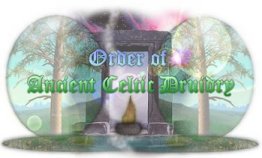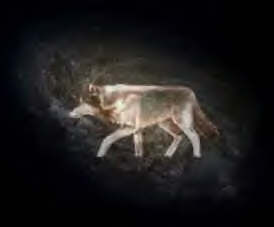
 Read Chapter 4 – The Challenge
Read Chapter 4 – The Challenge
Cut and paste the following questions into an email, add your answers, and send to MysterySchool with the subject line “OAT 4, CeltShamanism from ____________ (your magikal name)”
PART A
1. T/F – Much if not all, of the practice of shamanism is done in a group.
2. One of the first personal steps to becoming a shaman is being honest with yourself about your _________________, your ____________ ______________, and what __________________ you in _____________________ _______________.
PART B
Exercise 1: Do the personal test on pages 39 and 40.
Record your answers in your shamanic journal before going onto the question/answer exercises.
1. Why is it important to know why you chose to do what you do?
2. In order to become a shaman, a person must set ___________________ _______________ and strive to meet them.
3. T/F – Goals are ongoing, never static.
4. What three aspects of our lives need to be in balance so that life runs smoothly?
5. T/F – A shaman sees a great many things others do not.
6. A shaman has to become aware of their __________________ ____________________ at all times.
7. T/F – A shaman never says no, even when someone who asks for help really does not want it.
8. T/F – Shamanism fills a need within everyone.
9. T/F – To be a powerful shaman, you must have control over what is done with your auric energy.
10. T/F – To be an effective shaman you must accept responsibility for your choices.
11. According to the author — how does one let go of the past?
12. A shaman cannot afford to practice ____________, __________________, and __________________.
13. To the shaman — impatience maybe a signal of what?
14. To the shaman, all of nature is ________________, and therefore, part of her/himself. Nothing in nature is _________________; _____________ and ____________ are all part of a whole picture and being.
15. What must a shaman do with nature in order to journey successfully to the Otherworlds?
16. T/F – A shaman does not deal with a supreme power throughout their journeys.
17. T/F – A shaman has to be aware of all of their moods and track down the possible causes.
18. The shaman realizes that she/he progresses through a series of repeating _____________________ ____________.
19. Realizing where she/he is in a cycle at any given time helps the shaman to determine what?
20. T/F – A shaman needs to keep a dream journal so she/he can date and record each dream, later adding notes as to what happened that might be an interpretation.
21. An ____________, _______________, _____________ to a relationship, or _____________ of a loved one is often enough to send a natural, but undeveloped shaman seeking along new spiritual paths.
22. T/F – Shamans are not animal lovers.
23. Shamanic journeys always encounter a variety of animals, and the shaman must be ________________ and _____________ to communicate with them.
24. Practicing shamanism requires a _______________ __________ of all things. At the same time, the shaman must learn when to _______________ _____________ to new ideas and when to _____________ them.
25. T/F – A shaman knows that excessive talking (about personal life, beliefs, journeys, etc.) diminishes their power.
26. Is it OK to go and tell others about something that was told to you in confidence? Why or why not?
27. T/F – If you value certain social positions you will become a dedicated shaman.
28. A shaman values her/his aloneness, knowing that ____________ ____________ and _______________ come through during these times of quiet. Shamanic __________ and ________________ cannot compete with the _______________, ______________ ___________ mind, nor will they try.
Exercise 2 : Compare your list you did in Lesson Two with the answers you gave earlier in this lesson. Were there any suppress or eye-openers. Looking at your answers for this lesson, are there more items to add to your lesson 2 list. If so, go ahead and add them now. Send a report to the MysterySchool. In your report answer the following question: What have you learned so far about yourself?
Extra Credit Exercise: Take another journal page (or two) and divide it in half. At the top of one column write the word “positive.” At the top of the other column write the word “negative.” Down the side of the page(s) write the following, making sure you leave space to write in:
Self-discipline, Balanced life, Self-control, Responsibility for own life, Letting go of the Past, Manipulation, Patience, Connection with Nature, and Self-awareness.
Using the list you have already made, categorize each item listed. Don’t worry if there are some items that can’t be categorized. Just do the best you can.
Example: Dryad Katrein’s initial list may look something like this:
Things I like:
My ability to help people feel better using massage.
My deep blue eyes.
Things that need healed:
My sugar addiction
Here is how Dryad Katrein would categorize each item listed:
I would put “My ability to help people feel better…” under the category “Self-awareness” on the “positive” side. I would put “My sugar addiction” under the category “Self-control” on the “negative” side. “My deep blue eyes” is not something that can be categorized with the given categories.
* * * * * *
After you have completed your sorting, think about and answer the following question: Were there any categories that did not have anything positive or negative in them? Now go back and think about these areas in your life and see if there was something you missed. If there was, add it to your list. If not, do not worry about it for now. Doing this exercise may be helpful for the next lesson.
Please understand that these lists you have been making are not static. Things will be added to the lists or taken away from the lists as negative habits are worked on and new ones are realized.
Back to Celtic Study Hall | Back to Top
Northern Way Study Halls | Veli Celtic Study Hall | Top | Site Map

Credits:
Page Design & Misc. Graphics~ Caileadair
Created: 5/10/07


